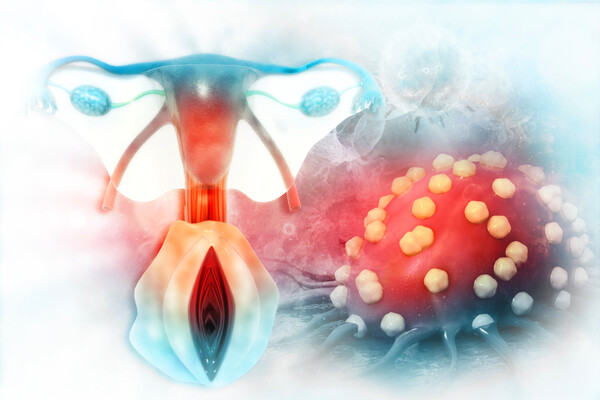Endometrial cancer patients are on the steep rise in Korea. According to the National Cancer Registry, endometrial cancer patients increased from 3.1 per 100,000 women in 1999 to 14.6 in 2021, marking an increase of about 4.7 times.
Endometrial cancer develops in the lining of the uterus, growing and shedding with a woman's menstrual cycle, and where implantation occurs during pregnancy. In the past, endometrial cancer was common in Western countries. In recent years, however, its frequency has steadily increased in Korea.

“Endometrial cancer is caused by excessive exposure to the female hormone estrogen,” said Professor Park Jun-sik of the Department of Obstetrics and Gynecology at Soon Chun Hyang University Hospital Bucheon. “Recently, endometrial cancer has been on the rise due to the increase in obesity caused by Westernized eating habits, low birthrate, and late pregnancies, often leading to excessive exposure to estrogen.”
There are two types of endometrial cancer -- type 1, caused by overstimulation of estrogen, and type 2, which is less estrogen-related.
Type 1 accounts for the majority of endometrial cancers, usually arising from atypical endometriosis, and is diagnosed at an early stage and has a relatively good prognosis. Type 2, on the other hand, arises from atrophic endometrium and is associated with rapid progression and a poor prognosis.
Endometrial cancer is most often caused by genetic mutations that occur during the proliferation of the endometrium. The main risk factors are estrogen replacement therapy, obesity, long anovulatory cycles, and estrogen-secreting tumors. About 5 percent of all endometrial cancers are caused by hereditary mutations and are characterized by occurrence before the age of 50.
Endometrial cancer is suspected when the endometrium is thicker than the normal range, and all patients with suspected endometrial cancer can be confirmed by endometrial biopsy and endocervical scraping followed by histologic examination.
In recent years, additional tests have been used to screen for hereditary predisposition to endometrial cancer to identify DNA mismatch repair (MMR), which can occur during DNA replication and recombination in tumors.
The main symptom of endometrial cancer is vaginal bleeding. Vaginal bleeding in postmenopausal women, heavy menstruation in premenopausal women, or irregular bleeding outside of menstruation should not be overlooked, as should light spotting on underwear.
“If left untreated, endometrial cancer can lead to complications, such as heavy vaginal bleeding and invasion of organs around the pelvis, so it is important to diagnose and treat endometrial cancer at an early stage,” Professor Park said.
Treatment for endometrial cancer varies depending on the stage of the disease. Stage 1 and 2 endometrial cancer, which involves only the uterus or cervix, is treated with hysterectomy and adjuvant radiation therapy after surgery, depending on risk factors for recurrence.
Radiotherapy may be performed first if the patient has underlying medical conditions, including advanced age, obesity, diabetes, or hypertension, which make surgical treatment difficult. Other staging procedures include electron hysterectomy, bilateral salpingo-oophorectomy, pelvic and para-aortic lymphadenectomy, and pelvic and abdominal lavage cytology.
For stage 3 and 4 endometrial cancer, the first-line treatment is maximal tumor reduction, including total hysterectomy, bilateral salpingo-oophorectomy, and pelvic and para-aortic lymph node dissection. However, if the disease is too advanced for surgery, chemotherapy or radiation therapy is recommended.
Recently, chemotherapy with immune checkpoint inhibitors has been recommended for the initial treatment of patients with advanced and recurrent endometrial cancer, as it has shown improved treatment outcomes.
“The incidence of endometrial cancer in Korea is expected to continue to increase in the future,” Professor Park said. “Since endometrial cancer is 100 percent curable if diagnosed at an early stage, women should have regular gynecological checkups once a year and visit a gynecologist if they have symptoms of vaginal bleeding in postmenopausal women, heavy or irregular menstruation in premenopausal women, or irregular bleeding so that they can receive accurate diagnosis and appropriate treatment at an early stage.”

